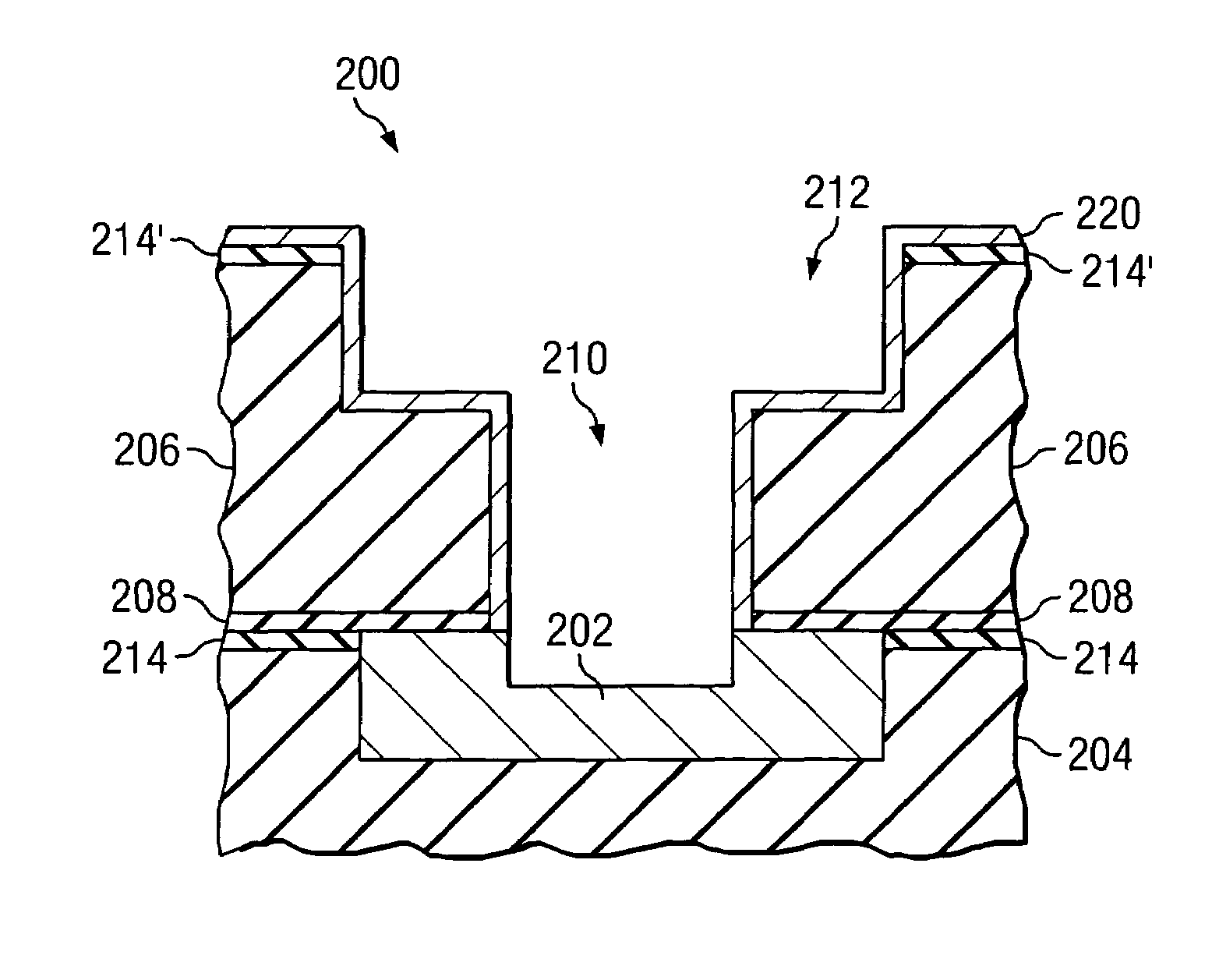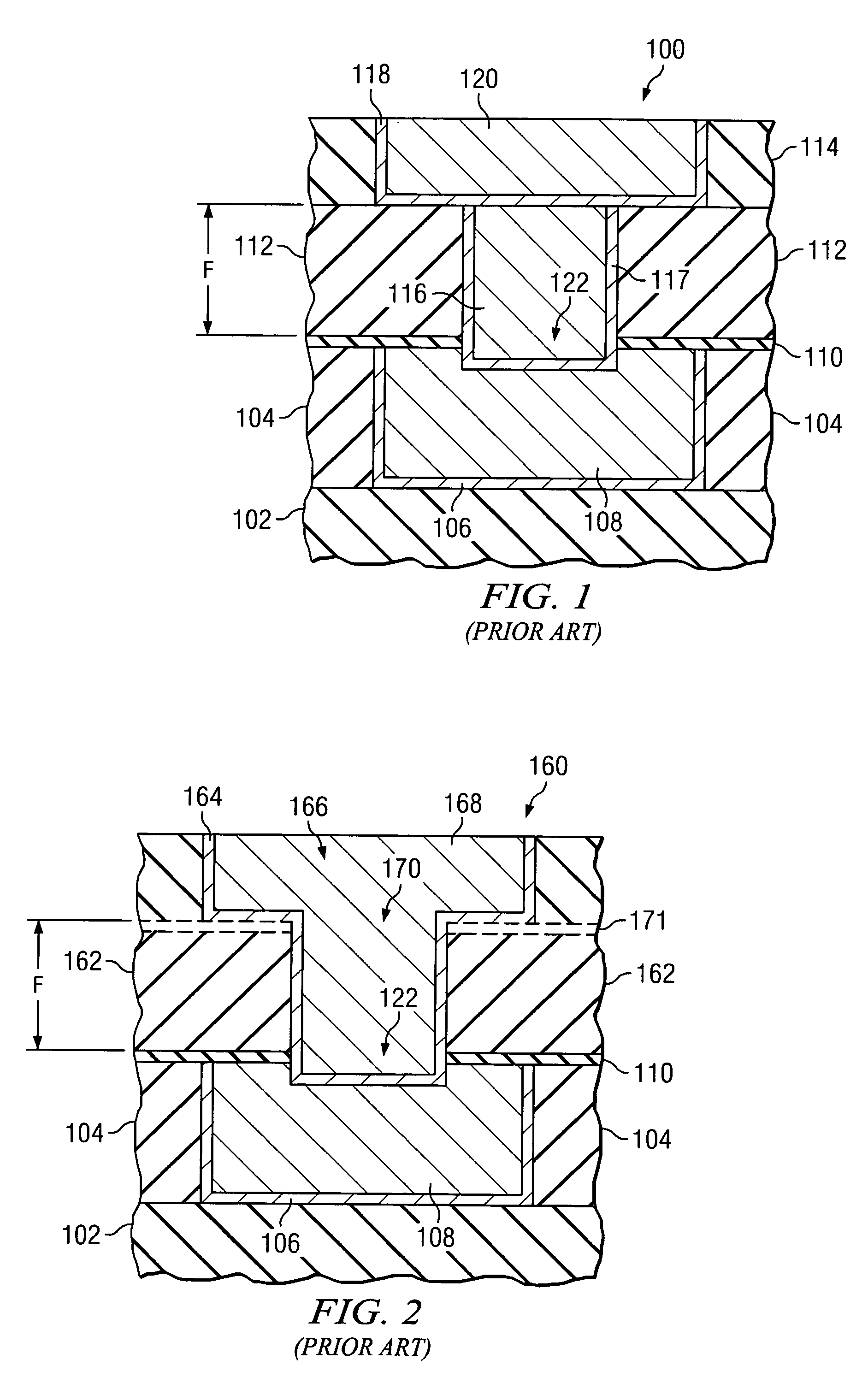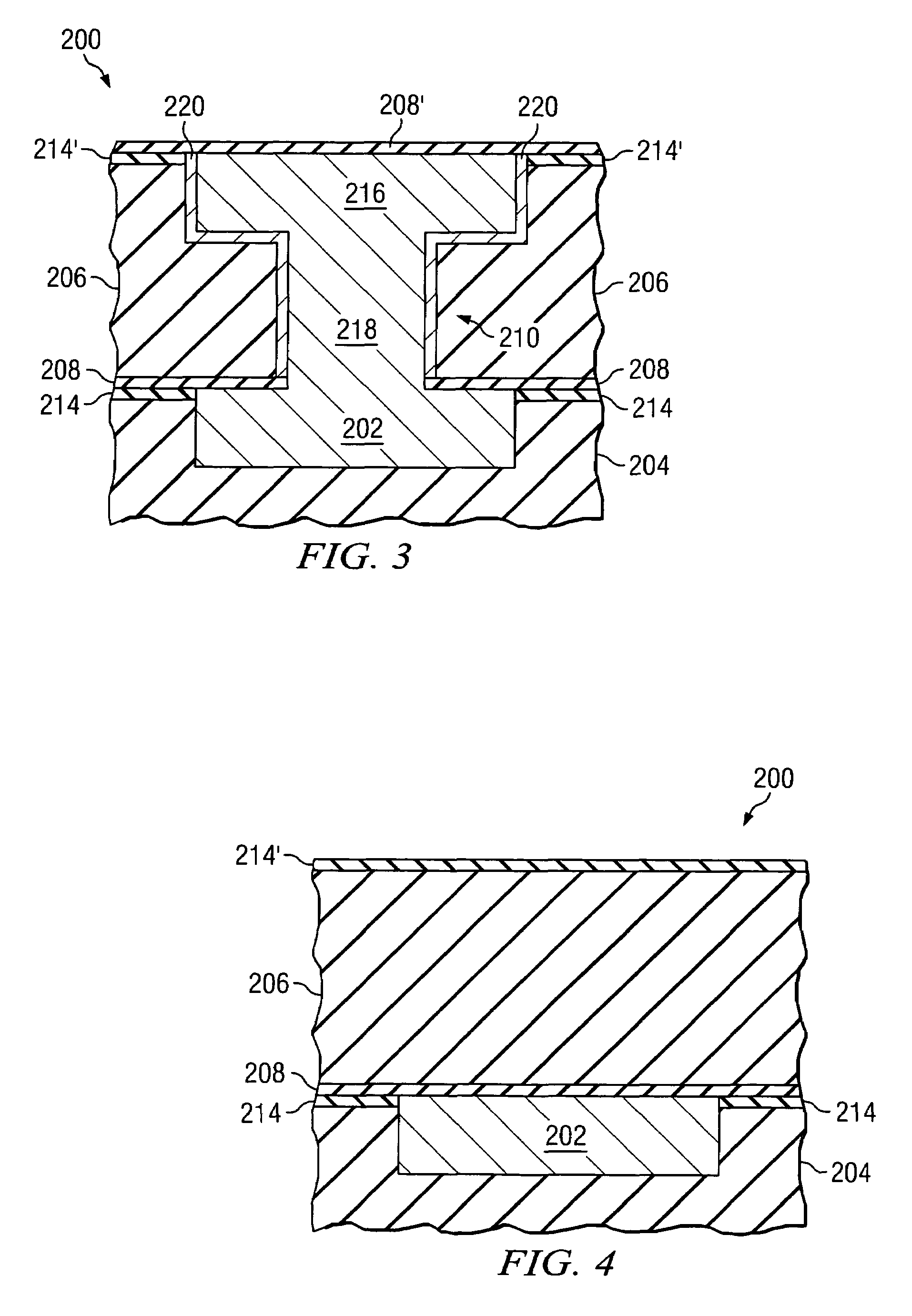Metal interconnect structure and method
a technology of metal interconnects and metal plates, applied in the direction of semiconductor devices, semiconductor/solid-state device details, electrical apparatus, etc., can solve the problems of reducing yields, achieve greater mechanical stability, improve the capacitive delay of chip level interconnects, and weaken the mechanical stability of stacks
- Summary
- Abstract
- Description
- Claims
- Application Information
AI Technical Summary
Benefits of technology
Problems solved by technology
Method used
Image
Examples
Embodiment Construction
[0029]The making and using of the presently preferred embodiments are discussed in detail below. It should be appreciated, however, that the present invention provides many applicable inventive concepts that can be embodied in a wide variety of specific contexts. The specific embodiments discussed are merely illustrative of specific ways to make and use the invention, and do not limit the scope of the invention.
[0030]The present invention will be described with respect to preferred embodiments in a specific context, namely a dual damascene metallization scheme. The invention may also be applied, however, to other interconnect structures.
[0031]A preferred embodiment interconnect structure is illustrated in FIG. 3. One embodiment for fabricating this structure is illustrated in FIGS. 4-9. As will be explained below, and as would be understood by one of ordinary skill in the art, various modifications of the specific structure and process are possible.
[0032]Referring first to FIG. 3, a...
PUM
 Login to View More
Login to View More Abstract
Description
Claims
Application Information
 Login to View More
Login to View More - R&D
- Intellectual Property
- Life Sciences
- Materials
- Tech Scout
- Unparalleled Data Quality
- Higher Quality Content
- 60% Fewer Hallucinations
Browse by: Latest US Patents, China's latest patents, Technical Efficacy Thesaurus, Application Domain, Technology Topic, Popular Technical Reports.
© 2025 PatSnap. All rights reserved.Legal|Privacy policy|Modern Slavery Act Transparency Statement|Sitemap|About US| Contact US: help@patsnap.com



